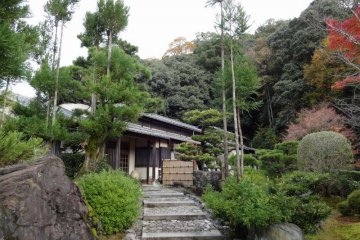
Ryokan Yamazaki
Erik OBrienA hidden gem, Ryokan Yamazaki is worth the 30 minute bus ride from central Kyoto. Tranquil surroundings, hearty food and family treatment will start & end your day right.

The Kosanji Temple, one of the most secluded UNESCO World Heritage Sites in Kyoto, is located in the middle of a dense mountain forest. The temple, which belongs to the sect of Shingon Buddhism, offers a wonderful view over the valley of the Kiyotaki River from the temple complex.
For anyone looking to get away from the hustle and bustle of the city, Kozanji Temple is a perfect half-day trip from Kyoto.
One of the special highlights of the temple are the "" painted scrolls of the frolicking animals, which are often referred to as the "" First Manga "". The identity of the artist, of the picture, which was probably created in the 12th century, is unknown. It is believed to be the monk Toba Sojo.
Often regarded as the ‘First Manga', these painted scrolls are called the “Scrolls of Frolicking Animals”. Drawn sometime during the 12th century, the identity of the artist is unknown but speculated to be the monk Toba Sojo. The painted scrolls depict a satirical story mocking the daily lives of priests, likening them to animals. The original scrolls are displayed at the Tokyo National Museum, but you can view a replica at the Sekisui-in hall at Kozanji.
The last remaining original structure in Kozanji, Sekisui-in was rightfully designated as a 'National Treasure'. It is one of the last remaining Kamakura-period buildings in all of Japan, most of them having perished to fires or other forms of man-made destruction over the years. Sekisui-in used to serve as a residence for an imperial family member who moved to the temple. In autumn, visitors flock to Kozanji to experience the million-dollar view from within Sekisui-in.
Take the JR Bus Takao/ Keihoku Route to Toganoo from JR Kyoto Station. 15-minute walk from City Bus Stop Takao from Sijo Station on the Karasuma Subway Line

A hidden gem, Ryokan Yamazaki is worth the 30 minute bus ride from central Kyoto. Tranquil surroundings, hearty food and family treatment will start & end your day right.
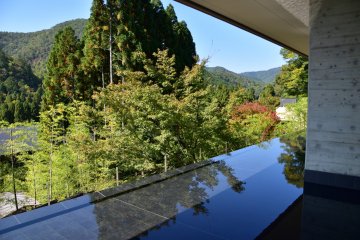
Tokyu Harvest Club Kyoto Takagamine & Viala is a gorgeous hotel inside the historical Shozan Resort Kyoto.

Close to Nijo Castle in Japan's most historic city, this stylish, modern hotel is comfortable, well located and supremely affordable.

This new restaurant is easily accessible by foot from Arashiyama Bamboo Forest, Arashiyama Station, and Saga-Arashiyama Station, making it an ideal spot to try authentic Japanese gyukatsu. Elevate your already unforgettable trip with an equally memorable meal.
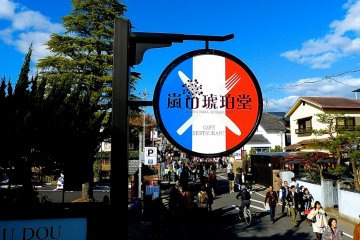
Kohaku-do is a casual French restaurant in Kyoto, Arashiyama. It is situated just a few minutes from Tenryu-ji Temple. And other train stations such as JR Saga-Arashiyama, Arashiyama Station on the Keifuku Dentetsu Line and Hankyu Line are all within a few minutes walk. The price range for the lunch sets is 2000-3000 yen, including hors d’oeuvre, soup, bread, a main dish, desert and a drink-bar. We ordered grilled whitefish and a hamburg steak. Both of the main dishes were quite good!

Sagano-yu is an unusual cafe in the popular Arashiyama area in Kyoto. Formerly a public sento, or bathhouse, the whole building has been converted into a modern cafe while maintaining the highlights of the former bathhouse. Tile art, mirrors and faucets are abundant, giving rise to a feeling of nostalgia. The menu is diverse with the specialty being pancakes and desserts, and lunch sets include light salads and a daily pasta or curry rice. Japanese snacks including flavored rusks and crackers are for sale, too. In addition, artisanal home decorations (zakka) are displayed in the gallery upstairs. Sagano-yu is open from 11 a.m. to 8 p.m. and the nearest stations within walking distance are JR Saga Arashiyama station and the Keifuku Electric Railway Randen Saga station.
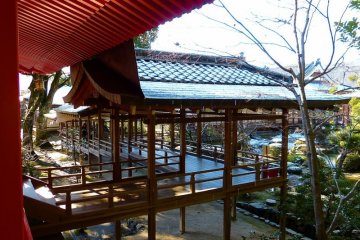
Daikaku-ji is a Shingon Buddhist temple in Ukyō-ku, a western ward in the city of Kyoto, Japan. The site was originally a residence of Emperor Saga, and later various emperor conducted their cloistered rule from here. The Saga Go-ryū school of ikebana has its headquarters in the temple. [Wikipedia]

Adashino Nenbutsu-ji is a Buddhist temple in Ukyo-ku, Kyoto, Japan. In 811 Kūkai is said to have founded a temple, then Honen altered it to the present Nenbutsuji. [Wikipedia]
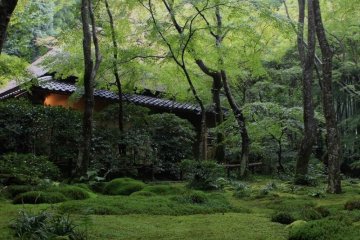
Gioji Temple (祇王寺) is a secluded Buddhist temple known for its picturesque moss garden.